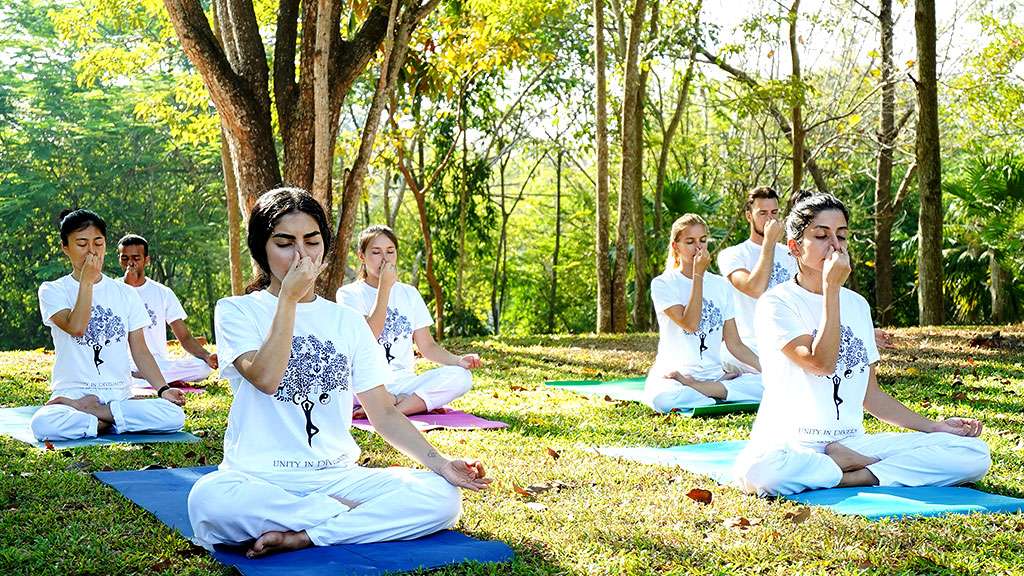


Today, aspects of the yogic discipline associated with improving the body are the most popular. These aspects include “asanas”, “pranayama” and “pratyahara”. The Sanskrit word “prana” refers to respiration. The word “ayama”, also of Sanskrit origin, refers to “control”. Pranayama refers to the regulation of breathing. Pranayama allows for a sense of control over the entire body as “prana vayu” or the air one breathes pervades the entire being.
Pranayama and Asana
The practice of pranayama is often combined with the practice of asanas today. The calm of mind required for maintaining an asana can be achieved through pranayama. One might even notice that the instructions for practising asanas themselves integrate breath control into the discipline. Before assuming a posture or asana as well as after establishing a posture, the yogi is required to focus on regulating his or her breathing.
For instance, in order to faithfully practise the Surya Namaskar, one has to regulate inhalation and exhalation when transitioning from one position to the next. The Surya Namaskar comprises 12 positions - forming 10 distinct asanas - and each position demands specific breathing patterns, switching between deep inhalation, slow exhalation and holding of the breath.
Prana + Ayama = Pranayama
The Word Pranayama is derived from Prana + Ayama. Prana means Life or Breath and Ayama means extending. It is believed that Pranayama can prolong your lifespan.
In the practice of yoga asanas, pranayama or breath control translates into even and deep breathing. Yoga practitioners who focus on pranayama increase the span of their inhalations, exhalations and even the holding of breath. This practice comes from the belief that an individual’s lifespan is measured not in days or years but in the number of breaths he or she takes.
In line with this belief, pranayama looks to increase the lifespan of the practitioner by increasing the depth but reducing the number of breaths drawn in a day. It is believed that any individual draws approximately 21,600 breaths (including inhalation and exhalation) within 24 hours. In Sanskrit, inhalation is referred to as “puraka” while exhalation is known as “rechaka”. Prolongation of breathing happens when the breath is held between inhalations and exhalations. This holding is referred to as “kumbhaka”.
The primary text that details the practice of classical yoga is the Yoga Sutras by Sage Patanjali. It is from the Yoga Sutras that classical yoga draws guidance even for its better-known aspects like asanas (or body postures) and pranayama (or breathing techniques). The core principles of pranayama practised even today are gleaned from the Yoga Sutras.
The popularity of pranayama as a yogic practice can be attributed to its meditative quality. While most forms of cardio exercise aim to increase heart rate and activity levels in general, yoga focuses on maintaining equilibrium. This makes pranayama increasingly relevant in a time of high-stress lifestyles.
Pranayama takes on a meditative quality because it demands the focus of mind. Focusing solely on breathing patterns keeps the mind relatively still, and imparts a deep sense of relaxation. This belief is common to both classical as well as modern schools of yoga.